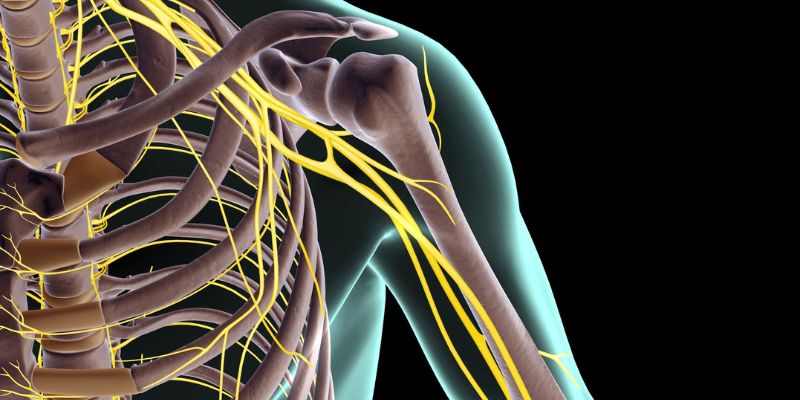Do you ever feel like something is missing in your life, and you can't focus on what it might be? You may have heard of the term "plexus" before, but if not, let me help explain exactly what that means.
Plexus is a three-dimensional network or mesh used to create structure and control in everyday life. A plexus typically consists of various patterns worked together to form an image or idea – much like a web.
They are commonly found in medical studies, engineering designs, architecture blueprints, and computer graphics – but they also go beyond these applications into many other aspects of our lives.
What is a Plexus, and how does it work?

A Plexus is a complex three-dimensional mesh of interconnected elements that create structure and control in everyday life. If you think of the human body, it consists of numerous interconnected systems, each with its own set of structures and components.
Similarly, a plexus connects various elements, such as energy points, pathways, grids, and other patterns. These connections work together to form an overall image or idea – much like how the web of a spider's web is constructed.
Plexuses can be found in medical studies, engineering designs, architecture blueprints, and computer graphics. They offer insight into organizations and processes that may need to be simplified to comprehend.
Through understanding these concepts, we can gain a deeper appreciation of the complexity and interconnectedness of our world.
Different Types of Plexuses

1) Spiritual Plexuses
This plexus type focuses on spiritual and metaphysical elements and is commonly found in Eastern traditions such as yoga and meditation.
Spiritual plexuses help one access and align with energy fields, the chakras, and the subtle energies within and around us.
2) Medical Plexus
Medical plexuses focus on the physical body – such as organs, tissues, cells, and muscle groups. They help provide insight into how these systems interact with each other to keep us healthy.
Understanding medical plexuses can also help us better appreciate our anatomy and physiology.
3) Energy Plexuses
Energy plexuses involve connecting energy points to understand their interactions and how they affect our overall well-being. This type of plexus is often found in acupuncture and traditional Chinese medicine.
Plexuses can be highly beneficial in helping us better understand the world around us, both physically and metaphysically.
By using plexuses, we can develop a better sense of structure and control in our lives – allowing us to make more informed decisions and achieve our goals.
Nerve Plexus Locations
The most common nerve plexus locations are the neck, shoulders, chest, and lower abdomen. These areas are where the major nerves of our body reside and can have a powerful effect on how we feel and function.
By understanding the location of these plexuses and their associated energy points, we can gain insight into which pathways may be blocked or activated to better manage our health.
Benefits of a Plexus system
Plexus systems offer a variety of benefits that can help improve the structure and control in everyday life. Here are some of the main benefits:
1. Increased Efficiency
- A plexus system can help streamline processes, allowing for increased efficiency and productivity.
By creating patterns or networks with specific goals in mind, tasks become easier to manage and complete in an organized manner. This also allows for better decision-making when dealing with complex situations.
2. Improved Structure
- Using a plexus system helps create order out of chaos by providing an overall structural framework to work within. With this greater level of organization comes improved clarity, which will aid in long-term planning and immediate decision-making.
3. Enhanced Visualization
- Plexus systems provide a visual representation of data, allowing users to quickly identify patterns and trends in the data.
This can be especially useful when analyzing large amounts of information because it helps simplify the process and makes it more intuitive.
4. Easier Collaboration
- Using a plexus system, teams can better collaborate on projects by breaking down complex tasks into manageable components that can be worked on simultaneously.
The structure also helps ensure each team member knows their responsibilities and how they fit into the larger project plan.
The function of a Plexus of Nerves
The function of a plexus of nerves is to facilitate the transmission of information from one part of the body to another. It can be used as a communication tool between different organs, muscles, and tissues, allowing for the coordination of movement and responses within the body.
Plexuses also sense environmental changes like temperature, touch, and other external stimuli. In addition to this, they help maintain organ functionality by providing signals that allow them to adjust their activities accordingly.
This helps ensure that all body parts work together harmoniously and efficiently. Not only does this keep us healthy, but it also allows us to carry out everyday tasks easily.
How to install a Plexus system?
Installing a Plexus system is relatively straightforward and can be done with just a few steps. Here's how:
1. Gather the Materials You Need: Depending on what type of plexus you are installing, you will need to gather appropriate materials such as tubing, wire, bolts, nuts, etc. Be sure to have all the necessary components before you begin.
2. Connect the Components: Once you’ve gathered all the necessary materials for your plexus system, it’s time to connect them. Ensure that each component fits properly into another one so that no part is loose and can create problems during installation or when using the system later.
3. Set Up the Base: Once you’ve connected all the components, you must set up a base for your system. This will provide the foundation to hold everything together and may require additional materials such as brackets or supports.
4. Secure the Plexus in Place: After setting up the base for your plexus, it's time to secure it using nuts, bolts, screws, or whatever other fastening device works best with your particular setup. Tighten them fully so no loose pieces could cause problems later.
5. Test Your System: Before putting your plexus system into use, test it to ensure that all components are connected properly and functioning correctly. This will help you identify potential problems and ensure your plexus system is ready for use.
FAQs
What is the plexus in the human body?
Plexus is a three-dimensional network of nerves and muscles that control body movements, such as walking, running, and breathing. It helps maintain posture and balance while allowing us to easily move through our day.
What are the benefits of plexus?
Plexus can help improve strength, flexibility, coordination, and balance. It can also reduce tension in muscles, ligaments, and tendons; improve range of motion; decrease the risk of injury; and aid in muscle recovery after exercise or physical activity.
How does plexus work?
The way that plexuses work is by using a combination of different components. These include muscles, ligaments, tendons, and bony structures that create a 3D network of points and pathways. This network of points and pathways allows for movement, sensation, posture, balance, and coordination.
Conclusion
Plexus can help create structure and control in our lives. Various industries use them, which can be seen in everyday designs and are even used to create art. By understanding the plexus, we can use it to make sense of the world and take charge of our lives. Try it out and see what you can create!




